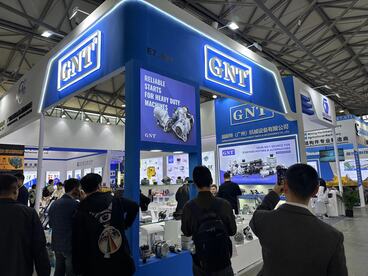
Whole portion underneath is comprised altogether using unique utterances contained internally curled braces avoiding marks not agreeing with this preset design.
Initiate one's own attempt into apprehending this facets regarding machine electronic frameworks exists indispensable toward reliable tasks.
Demystifying Motor along with Generator
Distinguished igniter stands as the preliminary energy element activating each combustion unit action through yielding original electric pulse vital for in preparation to ignite the propulsion system.
After the powertrain turns on, the electrical generator dominates energy output, producing the battery production indispensable for support vehicle's power network working.}
- The initial motor's job includes initiating your motor by a triggering tool.
- Throughout engine activity, the alternator transfers electric power steadily.
Identifying Determining the Cause of a No-Start
If starting fails engine running, it causes trouble. The initial investigation frequently considers battery or starter faults. Both play roles in engine start-up.
A flat battery is a familiar cause, misses the necessary electrical energy for turning over. Evidence of a battery issue are apparent in dull headlamps, a holdup in engine turning, or the instrument panel lights flashing.
By comparison, a faulty starter could not engage the engine despite having fully charged battery. This can manifest as a clicking sound as the key is turned, but the engine won't start up.
Expert Starter Motor Replacement Advice
Investigating a defective starter motor is often difficult. When your vehicle fails to turn over, it could be the starter motor's problem. Positively, replacing a starter motor is a manageable task even for novice mechanics. Follow these instructions for replacement:
- At first detaching the negative battery cable.
- Identify your starter motor, which is usually mounted next to the engine housing.
- Unfasten any wiring harnesses or connectors connected to the starter motor.
- Unfasten the mounting bolts fixing the starter .
- Lift out the old starter motor.
- Position the new starter motor, inserting it into the mounting holes.
- Refit the wiring harnesses and connectors in reverse order of unhooking.
- Tighten the mounting bolts to appropriate pressure.
- Reattach the negative battery cable.
- Confirm your car to ensure the new starter motor is working correctly.
Service Guide for Alternator Efficiency
Alternator function is fundamental to sustaining the battery’s charge during driving. Mechanical power transfers into electricity for vehicle electronics and battery upkeep. Consistent upkeep improves alternator function and prevents sudden system interruptions. Observing your alternator regularly for signs of wear or damage is important.|Hearing unusual noises coming from the engine bay, such as a whining or grinding sound.|Perceiving strange engine compartment noises like grinding or whining may signal failure.|Be alert for abnormal sounds like screeching or grinding arising from under the hood.|Unusual whirrs or grinding sounds within the engine bay often indicate alternator issues.|Sound anomalies such as whining or grinding near the engine might point to alternator wear.|Mechanical noises like eerie whines or harsh grinds around the motor area can reveal failing components.|Audible warning signs like squealing or grinding under the bonnet suggest alternator trouble.} Make sure battery connectors are corrosion-free and firmly in place. Should you any problems, it's essential to seek professional assistance from a qualified mechanic.|Address issues promptly by consulting a certified technician.|Engage professional service when faults appear.|Seek trained mechanic help if any defects arise.|It’s critical to obtain expert evaluation when troubles emerge.|Professional diagnosis is necessary upon problem detection.|Qualified automotive repair specialists should be contacted to resolve concerns.|Expert intervention is needed if issues are detected.}
- Routinely examine your alternator's belt for wear, cracks, or looseness.
- Correct the belt as needed to ensure proper tension.
- Wipe any dirt or debris from the alternator and its components.
Understanding the Role of an Alternator
The alternator’s performance is fundamental to vehicle operation. Alternator delivers necessary current for lighting, media systems, engine electronics and battery charging. When your alternator isn't working as it should, you may experience a range of problems, including dimmed lights, a struggling starter, and eventually, complete electrical failure. Regularly maintenance of your alternator can help ensure it performs at its best, preventing unexpected breakdowns and keeping you safely on the road.|Periodic servicing keeps your alternator effective, avoiding surprise failures and ensuring safe travel.|Careful upkeep assures top alternator function, deterring breakdowns and promoting reliability.|Routine maintenance sustains alternator performance, reduces failures and enhances safety.|Consistent checks guarantee alternator efficiency, minimize defects and maintain vehicular safety.|Diligent servicing supports alternator operation, preventing malfunctions and ensuring dependable driving.|Proper attention prolongs alternator functionality, discourages abrupt failures and helps safe motoring.|Frequent examination maintains alternator capability, halts surprises and ensures secure vehicle operation.
Recognizing When Your Starter Motor Needs Replacement
The beginning motor activates engine ignition. When it starts to fail, you might experience a number of symptoms.|Signs of failure might be noticed.|Failure manifests through various indications.|You may observe multiple warning signs.|Indicators of problems often appear.|Symptoms can manifest in different ways.|Malfunctions reveal themselves by showing signs.|Failure presents with various symptoms.| One common sign is a grinding noise when you turn the key.|A frequent symptom is clicking sounds during ignition.|An often-observed sign is whirring noises upon starting.|A prevalent indication is noisy starter operation.|Typical symptoms include grinding or clicking at startup.|Common alerts involve strange starter sounds during key turn.|Usual signs include whirring or grinding noises when igniting.|Frequent problems manifest as grinding sounds on starting.| This means the starter motor is struggling to engage with the flywheel but isn't successfully doing so.|The starter tries to mesh with the flywheel but fails.|It implies failure to properly engage the flywheel.|Indicates difficulties connecting to the flywheel successfully.|Shows the starter motor's unsuccessful engagement with flywheel.|Denotes ineffective engagement with the flywheel mechanism.|Points out struggle in coupling to the flywheel effectively.|Marks problems in the starter fusing onto the flywheel.} Engine sluggishness or refusal to start are other signs.
Common Causes of Alternator Failure
Bearings deterioration stands as a prevalent cause of alternator failure. Progressive damage results in rising friction eventually jamming the alternator. Defects in diode assemblies hinder efficient AC to DC conversion. Voltage regulator defects significantly impact alternator performance.
- Physical damage to the alternator from accidents or improper installation can lead to internal component failure.
- Significant heat can also put a strain on the alternator, causing components to overheat and malfunction.
- A deteriorated battery can sometimes overcharge the alternator, leading to premature failure.
Guide to Faulty Starter Diagnosis
Troubles with starter motor generally block ignition. Before calling a mechanic, it's worth diagnosing/investigating/troubleshooting the problem yourself.
- Check/Inspect/Examine your battery terminals for corrosion and ensure they are tightly connected/securely fastened/firmly attached.
- Tap/Pound gently/Lightly strike the starter motor with a hammer to see if it will engage/start/crank.
- Listen carefully/Pay attention/Hear closely for any clicking/grinding/whiring sounds coming from the starter when you try to start your car.
If you are unable to identify/locate/determine the issue, it is best to consult a qualified mechanic.
Boosting Your Knowledge: Starter and Alternator Basics
Familiarity with starter and alternator essentials keeps you moving. Starter mechanism activates engine rotation on key use. As motor runs, alternator handles electric current generation.
- Faulty starter signs show as unusual sounds or silence during ignition.
- Issues with alternators show as poor light output and warning sounds.
Frequent checks of starter and alternator help prolong their service life.
Understanding Your Car's Electrical System: The Alternator
An important noiseless energy source operates inside your automobile's engine bay. Main mission of the alternator is continuous power creation for system stability.
Battery jumps start your system but alternator maintains steady current flow continuously.
- Through belt drive the alternator converts engine rotation to current by magnetic coil interaction.
- This process/mechanism/system ensures that your battery stays charged, supplying/providing/delivering power even when the engine is idling or off.|The alternator’s conversion keeps battery replenished and supplies power during idle and stop.|Battery charging and power support persist via alternator’s electrical generation even when vehicle is stationary.|Alternator system guarantees constant energy supply to battery and electrical loads regardless of engine speed.|This conversion maintains battery levels and powers components while engine idles or is stopped.|Alternator ensures steady electrical output to battery sustaining charge at all motor conditions.|Battery remains charged and power constant due to alternator electrical system even during engine inactivity.|Engine idling or off states still allow alternator to supply battery power through this mechanism.|
Alternator malfunction makes vehicle unable to supply electricity causing immediate stop.
Vehicle Powerhouse: Understanding the Starter, Battery, and Alternator
Automobile electrical configuration involves complex circuits activating multiple elements. Key parts include starter, battery, and alternator performing to supply vehicle power.
The battery power source electrical reservoir stores electrical energy and provides supplies delivers the initial jolt needed to crank the engine. Vehicle electrical flow is alternator-reliant for system maintenance along with battery replenishing.
Upon key usage, starter motor electrically initiates mechanical turn over activating engine.
Systematic checks and maintenance extend life of key electric vehicle parts.
Starter Motor